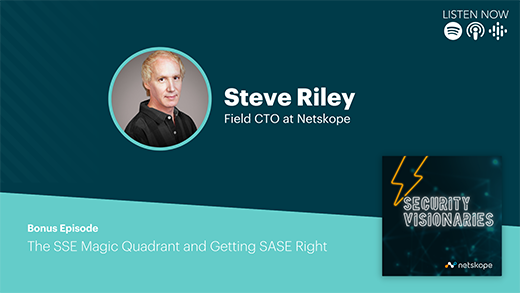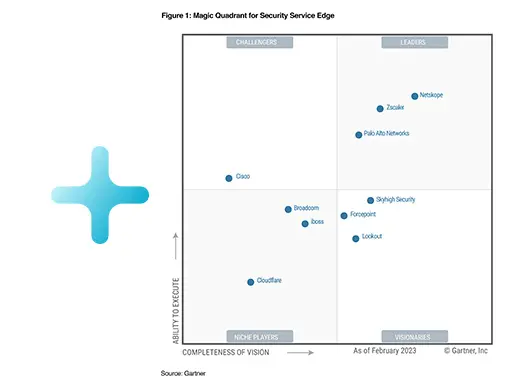The COVID-19 pandemic has indelibly changed the way we all work. As the world has opened back up and organizations have begun making the return to the office, many employees still want a hybrid work model.
In an ideal hybrid working model, employees feel empowered and more productive given the freedom to do their work from any location or device, whenever it’s most convenient. Users need fast, secure access to their data, regardless of where their applications are located. They want to be able to seamlessly transition between working with local and cloud resources at the office or at home. The user experience has to be exceptional. All of this is enabled by having converged cloud-delivered on-ramps that provide a single inspection point.
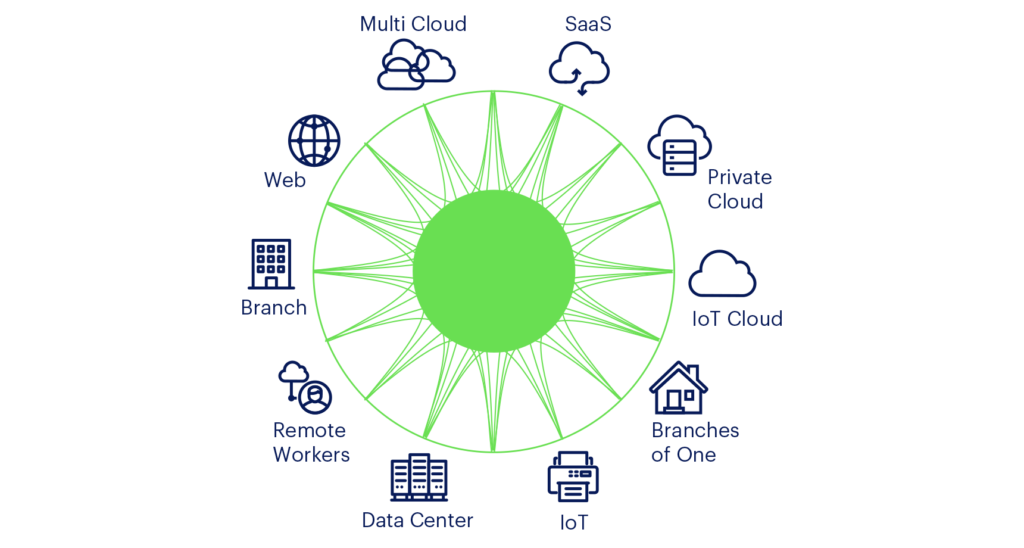
Whereas pandemic efforts were intended to be temporary fixes to maintain worker productivity and agility while reducing office and infrastructure costs, now, hybrid working is essential when it comes to retaining and attracting talent, as skill shortages run rampant across industries and workers relocate out of big cities. Additionally these transformations offer the opportunity to unleash the potential of the workforce with an improved user experience that doesn’t sacrifice security.
Even with all of these benefits in mind, and the competitive edge they provide, actually implementing the necessary capabilities for a successful hybrid workforce is still easier said than done. Many organizations are recognizing substantial architectural and technological limitations that need to be addressed in order to unlock the full potential of digital transformation and hybrid work.
Hybrid work challenges—and opportunities
The efforts that got organizations through the early days of the pandemic were mostly concentrated around quick ways to accelerate earlier programs and optimize existing technologies to let employees work remotely. However, these approaches fall short when it comes to implementing hybrid work at scale.
Even after the acceleration brought on by the pandemic, many organizations are still reliant on a patchwork of multi-vendor security appliances, as well as VPNs and MPLS tunnels that backhaul traffic—since most user traffic is destined for the internet, this makes for a dismal user experience full of network latency. Because of this, IT teams often resorted to split-tunneling and direct-to-internet workarounds to improve the user experience, putting security at risk. If you think about security when it was still on-premises, there were 12-15 different types of inspection happening, but when organizations went to work from home, and IT implemented these workarounds, inspection dropped significantly.
Plus without an underlying foundation of zero trust security, organizations are losing key visibility, as well as control, for data, threat, and risk management. Not easing matters is the fact that the average organization is using 2,415 cloud applications. And with Gartner’s prediction that 70% of all enterprise workloads will be deployed in cloud infrastructure and platform services by 2023, it’s easier to understand how all of these shortcomings, combined, show potential for much bigger risks to the business.
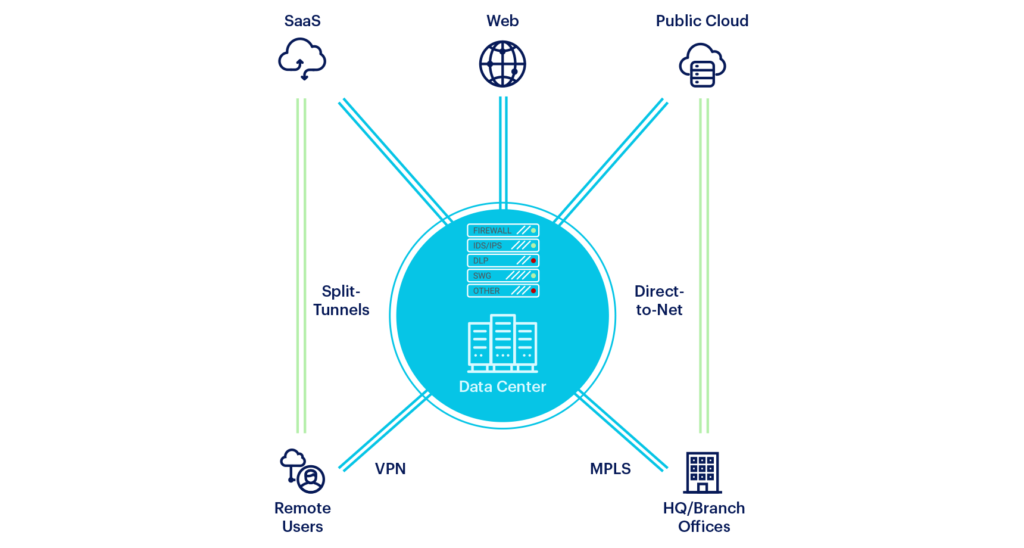
Networking and security teams want to enable their organization to work in the most productive and secure ways, but each side has its own needs and list of must-haves that need to be considered. Networking teams don’t want to sacrifice network performance and user experience, while security teams don’t want to sacrifice visibility and protection. Additionally, both teams were struggling with tool sprawl which did not integrate with each other while dealing with acute talent shortage. In order to successfully implement a hybrid work approach, these two visions need to be unified as the organizations continue to transform. A modern architecture is needed that is easier and cost effective to operate.
All of these factors taken together mean that current hybrid work approaches are likely only operating at a fraction of what they should be, which only makes it harder for employees to get their work done effectively and efficiently, therefore keeping the business productive. The answer here is transforming hybrid work approaches using a converged secure access service edge (SASE) architecture, one that provides a single point of inspection for traffic that enables a sustainable, fast, secure, and cost-effective hybrid work experience, unifying the needs of both networking and security teams.
This is where Netskope uniquely can help.
A SASE solution to hybrid work challenges
When you take a closer look at the must-haves from both networking and security teams, they include ideas on how to better enable both cloud and mobility through transformation in how networks are designed and how security is applied. This is the core of “why SASE,” which, as a framework first shared by Gartner in 2019, describes a cloud-based architecture that delivers network and security services meant to protect users, applications, and data in a simpler, much more efficient way than previous generations of either security or networking technology could do separately. Security service edge (SSE) encompasses a unified set of capabilities for the “security” side of SASE. This includes cloud access security broker (CASB), secure web gateway (SWG), zero-trust network access (ZTNA), firewall-as-a-service (FWaaS), data loss prevention (DLP), and remote browser isolation (RBI) delivered from a single platform. SSE is coupled with the “networking” side of SASE, also known as WAN Edge or described in terms of SD-WAN technology. The converged SASE that underpins the Netskope Security Cloud platform consists of Netskope Intelligent SSE services for security, and a combination of Netskope NewEdge and integration with SD-WAN on the networking side. Offering these capabilities as a converged platform, with a single point of inspection offers the best of both worlds for networking and security teams.
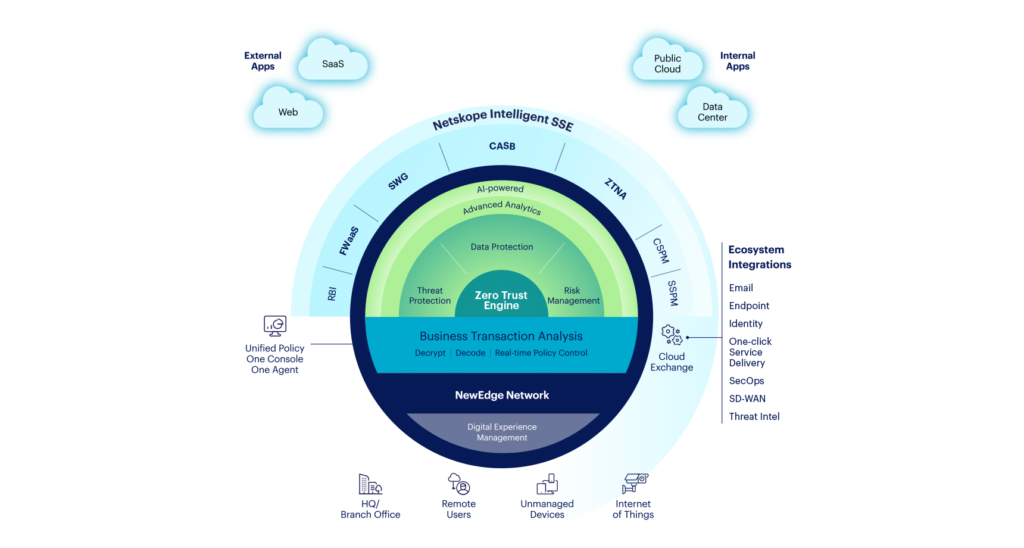
If you look at hybrid work from the perspective of a security team, the converged security capabilities of a SASE framework with SSE are key to helping solve risk, privacy, and visibility issues. The Netskope Security Cloud platform uses a SASE architecture to converge cloud security services together into the Netskope Intelligent SSE solution. Netskope Intelligent SSE features the Zero Trust Engine, which uses a wide array of contextual telemetry to inform every security decision being made, with zero trust principles at the core. This allows security teams unmatched visibility into user traffic and behavior, alongside ML-powered threat and data protection capabilities to help continuously monitor sensitive data no matter where the user may be working from.
From a networking perspective, being able to utilize a security private cloud like Netskope NewEdge helps them to guarantee fast and reliable access to resources regardless of where their users are located. Netskope NewEdge is a ubiquitous cloud-native architecture with data centers around the world, which eliminates the need for backhauling traffic through a central network for inspection. Now there is just a single point of inspection for all users and services, which not only improves user experience, but also helps solve some of the security team’s problems as well, as it discourages split-tunneling and other risky behaviors. Because NewEdge is already integrated with the security controls of Netskope Intelligent SSE, it can utilize ZTNA for extending efficient secure access to private apps users would otherwise be unable to access without a VPN. Finally, Digital Experience Management provides granular visibility into user traffic.
And, because all of these capabilities are part of one, converged SASE offering, this helps to decrease the cost and complexity that plagues both security and networking teams. Netskope Intelligent SSE can help solve for overly complex and costly security stacks by eliminating the need for patchwork legacy security solutions and cumbersome policy management, instead providing consolidated security technologies onto a unified, cloud-native platform. Netskope NewEdge also tightly integrates with SD-WAN solutions which can help organizations decrease their reliance on costly, inefficient MPLS connections, as well as utilize Netskope Private Access to help eliminate the need for traditional VPN clients and heavy-duty VPN concentrators.
Unifying the missions of both security and networking teams with the help of the Netskope SASE framework, powered by Netskope Intelligent SSE and NewEdge, will only help better enable them to transform their hybrid work approaches to be sustainable, secure, and cost effective. Ultimately, network wants to accelerate and maintain quality user experience, and ensure ubiquitous resource access, while security wants to extend visibility and control for risk management using zero trust principles, as well as threat and data protection. The converged Netskope SASE framework’s single point of inspection enables organizations to achieve both of these objectives simultaneously while also reducing cyber risk and the complexity of their existing patchwork stack.
If you’d like to learn more about how Netskope can help enable your hybrid work transformation, visit our Hybrid Work page. If you’d like to learn more about maximizing the benefits and advantages of hybrid work, register for our upcoming hybrid work webinar series.













